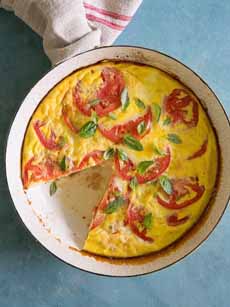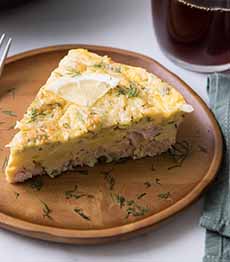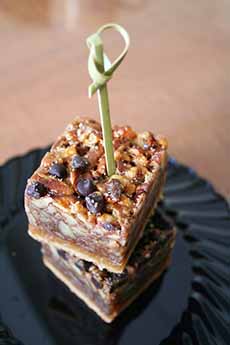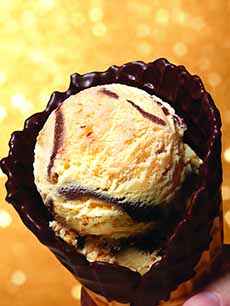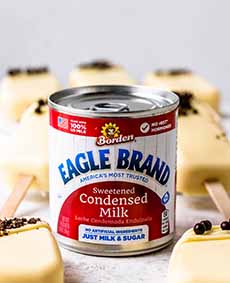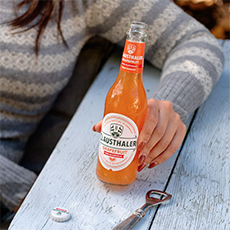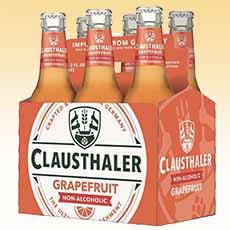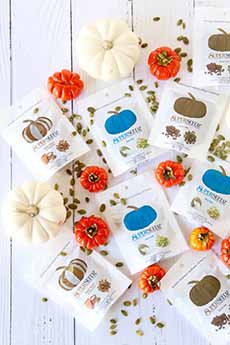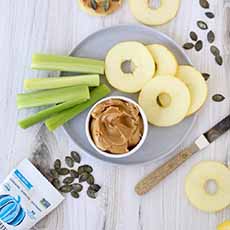|
Plant-based foods are enjoying the spotlight, and old standards like beans are finding themselves on a plate with popular breakfast foods. Beans are rich in protein and fiber, and also provide a good level of satiety, the satisfied feeling of being full after eating. That’s why we’re highlighting beans for breakfast!
Beans are one of the most versatile, nutritious, and affordable ingredients you can use in everyday cooking.
It’s easy to add a side of baked beans, black beans, kidney beans or other beans with breakfast eggs. Here, thanks to Flavor & The Menu, are six more reminders of how easy it is to add beans to breakfast.
Using canned beans like Bush’s make it a snap.
You can find bean recipes for every meal at BushBeans.com.
> The different types of beans.
> The history of beans.
> 13+ bean holidays.
> Check out the different types of breakfast eggs.
EASY WAYS TO ADD BEANS TO BREAKFAST
1. Breakfast Burrito
The breakfast burrito is a fan favorite. Make one with black beans, pico de gallo, scrambled eggs, guacamole, and a corn or flour tortilla. Born in Mexico, today’s style of burrito was devised in the U.S.A. (photo #4). Check out the history of the burrito and the modern burrito.
2. Huevos Rancheros
Huevos rancheros is a Mexican breakfast dish named after the ranchers who first enjoyed it. The basic dish consists of fried eggs served on lightly fried or charred corn or flour tortillas topped, with pico de gallo (a salsa made with tomatoes, chili peppers, onion, and cilantro).
Common accompaniments include refried beans, Mexican-style rice, and guacamole or slices of avocado, with cilantro as a garnish.
You can make a deconstructed version with smashed black beans topped with two sunny fried eggs, pico de gallo, salsa verde, and tortilla chips. Here’s a recipe for pico de gallo.
You can also have a side of beans—baked or otherwise—with any style of eggs.
3. Black Bean Breakfast Chili
Top black bean chili with two eggs, homestyle potatoes, queso fresco, and salsa verde.
4. Breakfast Bowl
America has embraced bowl recipes, and that includes breakfast bowls, with their layers of flavor and texture. At breakfast, beans make a great base for bowls. You can use ingredients from the Caribbean and Latin America to add more flavor to canned beans.
Here’s an idea for Egg & Mushroom Cazuela from Chicago’s Tortas Frontera:
Create a bowl of black beans, roasted sweet potatoes, scrambled eggs, Jack cheese, and roasted poblano strips, topped with wild arugula, Cotija cheese, cilantro, tortilla strips, and avocado.
5. Shakshuka
A Middle Eastern dish of eggs poached in a sauce of tomatoes, chiles and garlic, shakshuka or shakshouka is commonly spiced with cayenne, cumin, nutmeg, and/or paprika.
Here’s a recipe. Serve it over a base of seasoned beans.
6. Carnitas & Beans Frittata
Make a frittata (photo #3) and top it with beans and carnitas. This dish can take you from breakfast through lunch and dinner.
7. Toast With Mashed Beans
Beans have much more protein than avocado toast, or any other spread. Baked beans on toast are a British classic.
8. Mexican Parfait
Layers of beans, Greek yogurt or sour cream, and any other fixings you heart desires make this a wonderful way to enjoy your breakfast yogurt. Here’s the recipe (photo #8).
MORE WAYS TO ENJOY BEANS AT EVERY MEAL
Salads
There are many bean salad recipes but the ones we serve most often are:
Black beans in Southwestern or taco salads.
Chickpeas in Mediterranean salads with cucumbers, tomatoes, and feta.
Three-bean salad.
White beans with tuna, red onion, and lemon vinaigrette.
Sandwiches & Wraps
Bean and rice wraps for a quick lunch (add any leftover proteins).
Bean patties or veggie burgers.
Hummus (chickpea spread) or other bean spread with roasted vegetables or turkey.
Refried pinto or black beans in burritos and tacos.
Roasted chickpeas in shawarma-style wraps.
Pasta & Grains
Bean ragù as a vegetarian alternative to meat sauces.
Lentils or black beans mixed into grain bowls with quinoa or farro.
White beans in pasta e fagioli.
Soups & Stews
Beans can be added to just about all stews, and many soups. Start with:
Lentils in hearty lentil soup or curried dal.
Navy or great northern beans in white bean soup with herbs.
Pinto or kidney beans in chili or bean stew.
Casseroles & Bakes
Three-bean casserole with cheese and breadcrumbs.
Bean enchiladas or lasagna with bean filling.
Baked ziti with added cannellini beans (or beans of choice, e.g. black-eyed peas).
Snacks
Bean dip with pita or crudités.
Guacamole-bean or hummus-bean dips or spreads.
Mini bean empanadas or samosas.
Salsa, many styles including corn and bean.
Roasted chickpeas.
International DishesCuban black beans and rice (congri).
Ethiopian misir wot (spiced lentils).
Indian chana masala (chickpeas).
Middle Eastern ful medames (fava beans).
South Asian besan (chickpea flour pancakes or pakoras).
|
|
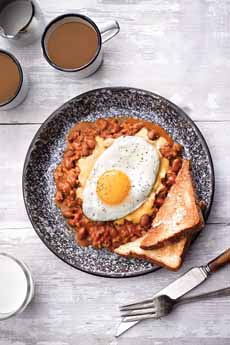
[1] Hearty breakfast chili topped with queso and a fried egg (photos #1, #3, and #4 © Bush’s Best).

[2] A breakfast bean casserole, layered with kidney beans, srambled eggs and cheese (photo © Sun Basket).

[3] Carnitas and beans frittata: you can substitute an omelet for the frittata (the difference).

[4] A bean burrito with avocado and brown rice wins the breakfast triple-crown (photo © Good Eggs).
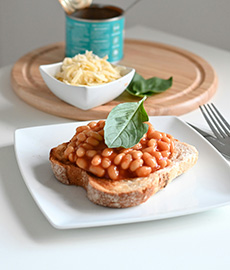
[5] Mash seasoned black beans, or use baked beans from the can, British style. If you like, sprinkle with shredded Cheddar or other favorite cheese (photo © Nik | Unsplash).

[6] Huevos rancheros with black beans. Here’s the recipe (photo © Tesco Real Food).

[7] Shakshuka and black beans. Here’s the recipe (photo © Bake To The Roots).

[8] Southwestern yogurt parfait, delicious for breakfast for lunch. Here’s the recipe (photo © Food Should Taste Good).
|










